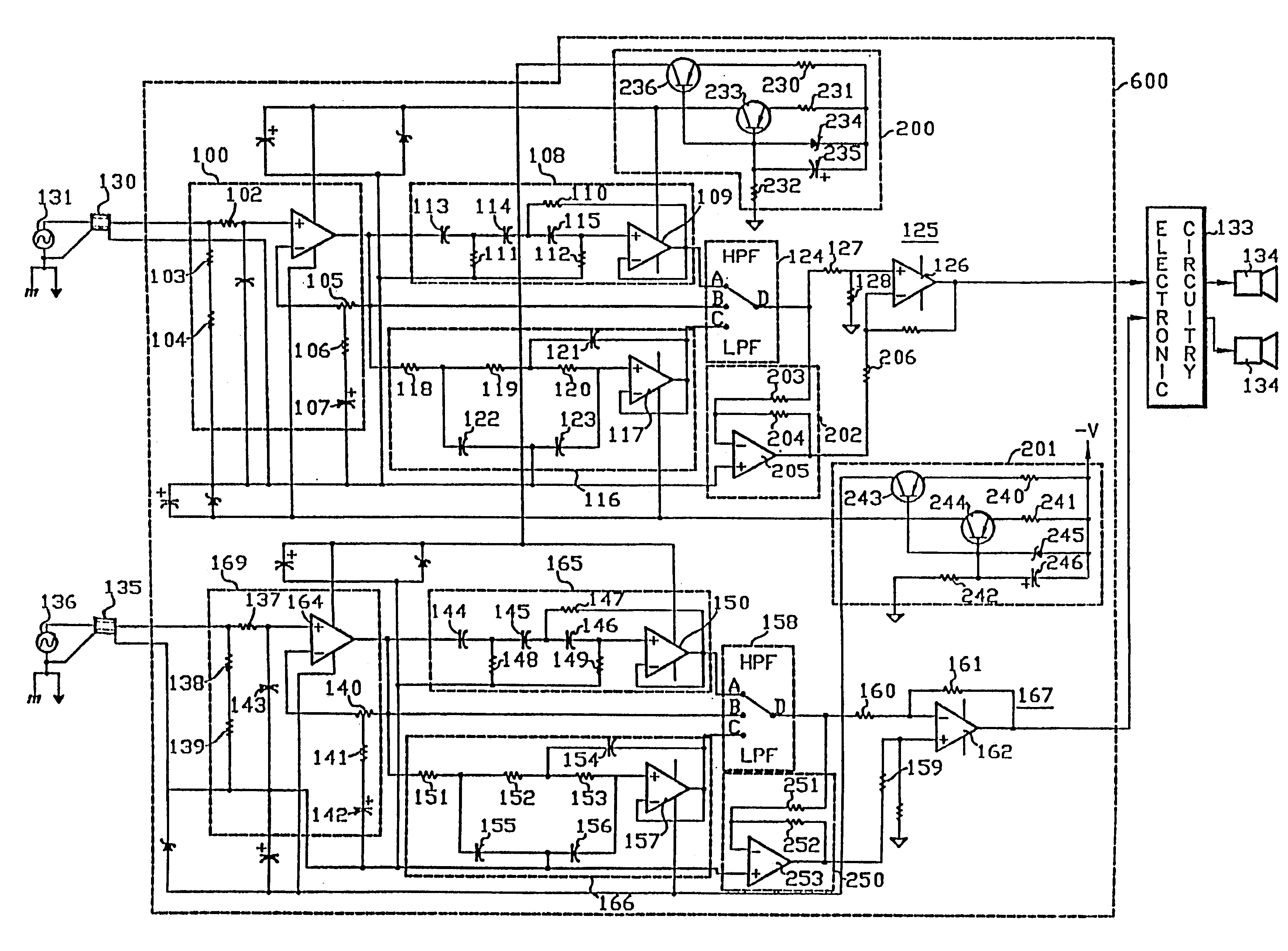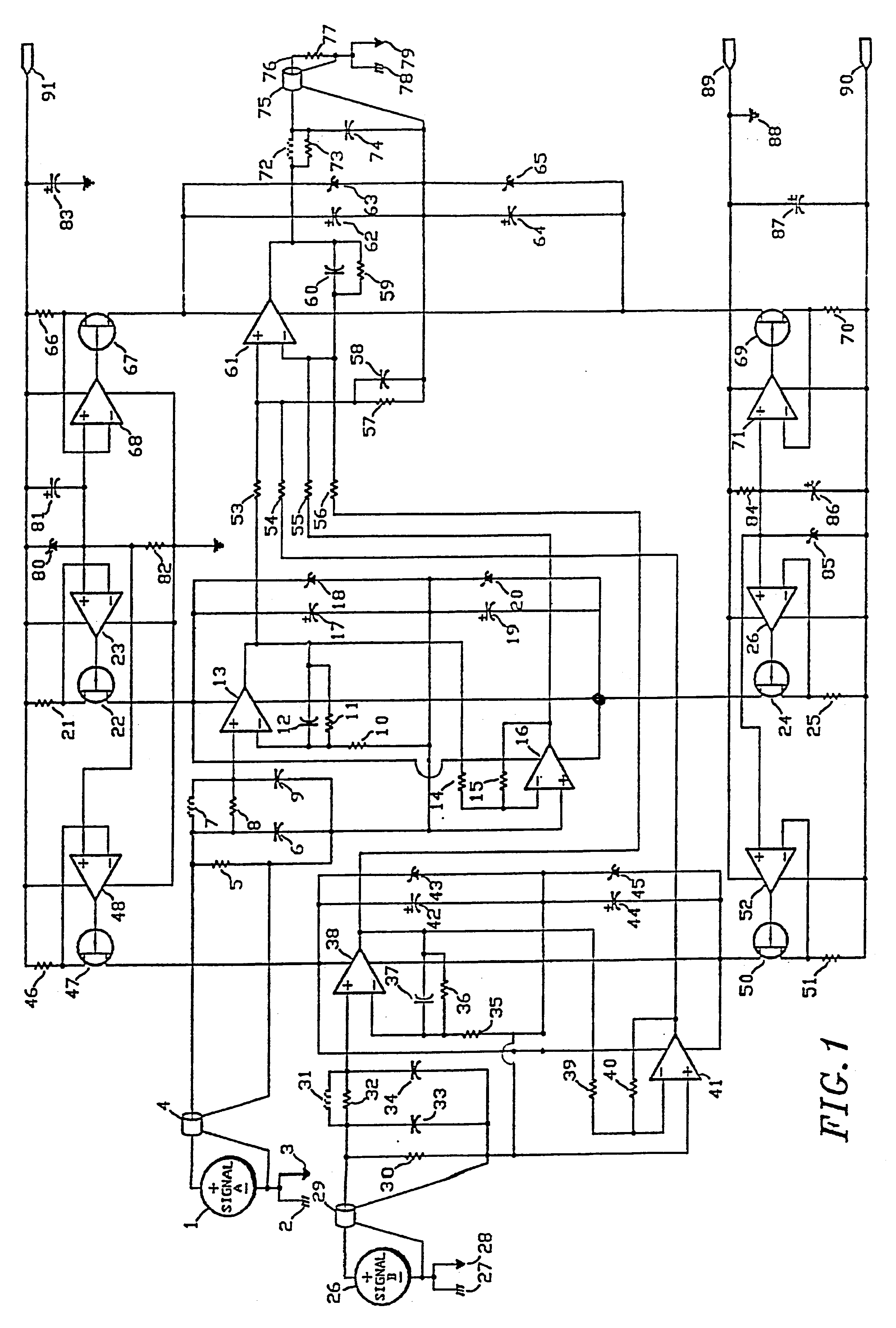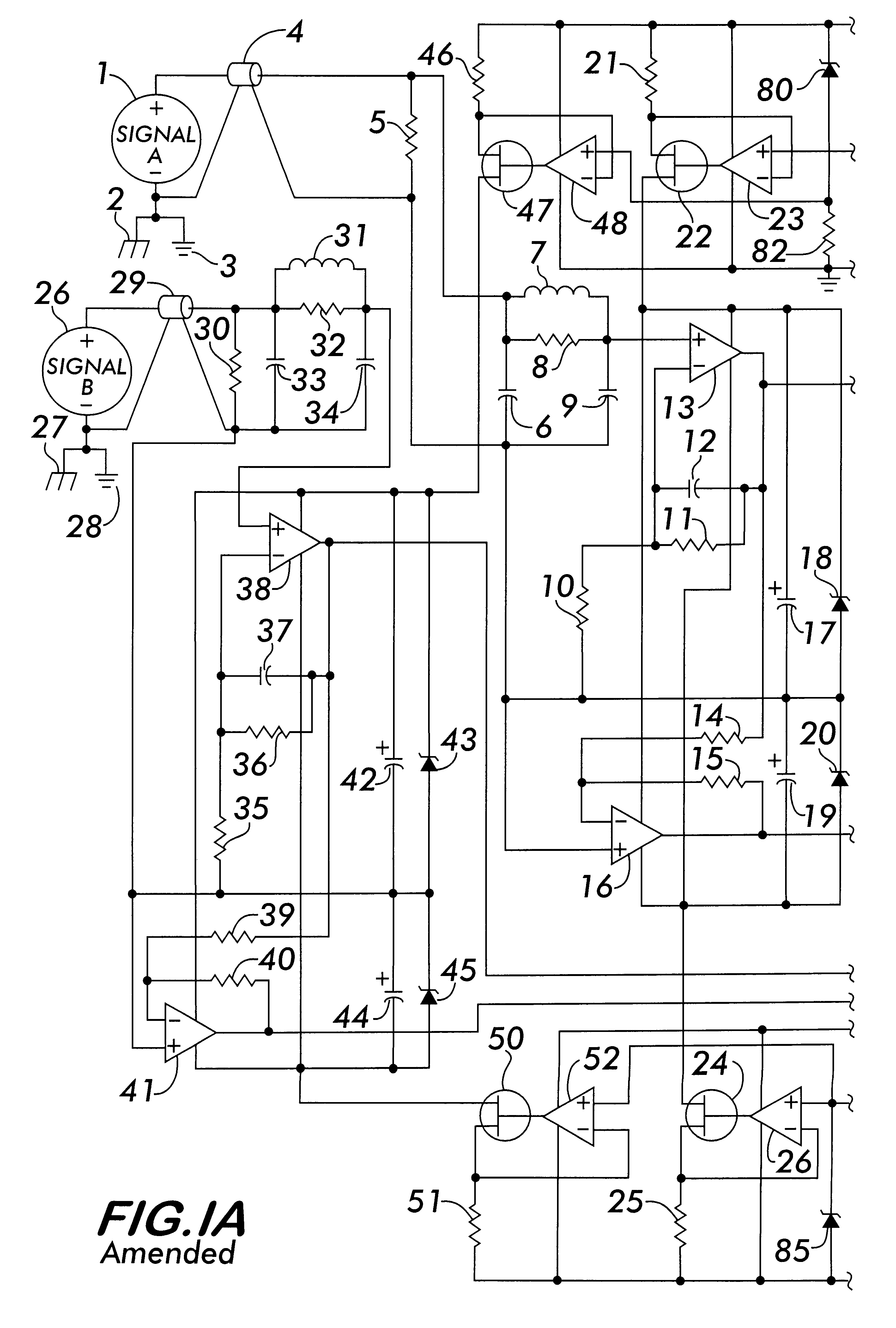Signal conditioning apparatus
a signal conditioning and apparatus technology, applied in the direction of current interference reduction, differential amplifiers, amplifiers with semiconductor devices/discharge tubes, etc., can solve the problems of interference between the fidelity of signals being conveyed over conductors, the source of many types of electrical interference, and the fidelity of signals being conveyed. to achieve the effect of less costly and more efficien
- Summary
- Abstract
- Description
- Claims
- Application Information
AI Technical Summary
Benefits of technology
Problems solved by technology
Method used
Image
Examples
Embodiment Construction
Referring to the drawings, in which like reference numerals identify identical or similar elements, and in particular to .[.FIG. 1.]. .Iadd.FIGS. 1A and 1B.Iaddend., signal source 1 may be understood to be differentially related to signal source 26 in instances where signal 1 and signal 26 are both available and known to relate to each other in an arithmetically inverse manner. Such a relationship is not necessary to carry out the present invention. Other relationships may be appropriate; indeed, if the circuit were to be used as a mixer of signals, there may be no relationship at all. Also, signal 1 or signal 26 need not convey a signal at all, and either may be disconnected to apply the device to single ended signals utilizing only two conductors to convey a signal, without limiting the effectiveness of the device.
Signal 1 and Signal 26 are conveyed over coaxial cable(s) 4 and 29 respectively. Coaxial cables are preferred in connection with this invention because the coaxial natur...
PUM
 Login to View More
Login to View More Abstract
Description
Claims
Application Information
 Login to View More
Login to View More - R&D
- Intellectual Property
- Life Sciences
- Materials
- Tech Scout
- Unparalleled Data Quality
- Higher Quality Content
- 60% Fewer Hallucinations
Browse by: Latest US Patents, China's latest patents, Technical Efficacy Thesaurus, Application Domain, Technology Topic, Popular Technical Reports.
© 2025 PatSnap. All rights reserved.Legal|Privacy policy|Modern Slavery Act Transparency Statement|Sitemap|About US| Contact US: help@patsnap.com



